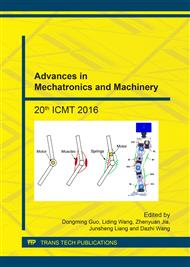p.207
p.212
p.218
p.224
p.230
p.236
p.242
p.248
p.254
High Performance Electrodes for All-Solid-State Supercapacitor Prepared by Using E-Jet Deposition Technique
Abstract:
Electrohydrodynamic jet (E-jet) deposition technique was used to prepare thin film porous electrodes for all-solid-state electrochemical supercapacitors. The performance of thin film graphene/PANI electrodes separately prepared by E-jet deposition and brush-coating were comparatively studied in supercapacitors. Results show that the specific capacitance of the supercapacitor by E-jet deposition can reach 228F·g-1 at 0.5A·g-1and remain 92% after 1000 charge-discharge cycles. Compared to those electrodes made by traditional brush coating techniques, the capacitance and cycling stability of the supercapacitors in this work were respectively increased by 11% and 7%, means that E-jet deposition can be an ideal technique for fabrication of high performance supercapacitor electrodes.
Info:
Periodical:
Pages:
230-235
Citation:
Online since:
July 2017
Authors:
Keywords:
Price:
Сopyright:
© 2017 Trans Tech Publications Ltd. All Rights Reserved
Share:
Citation:


